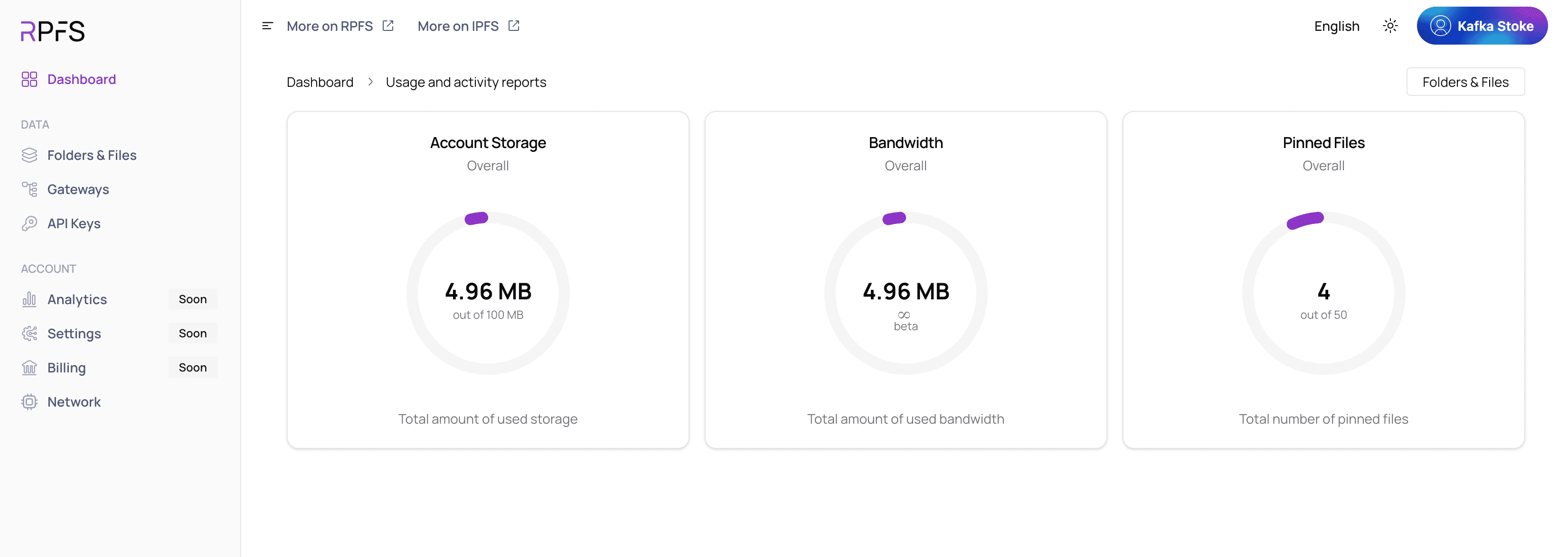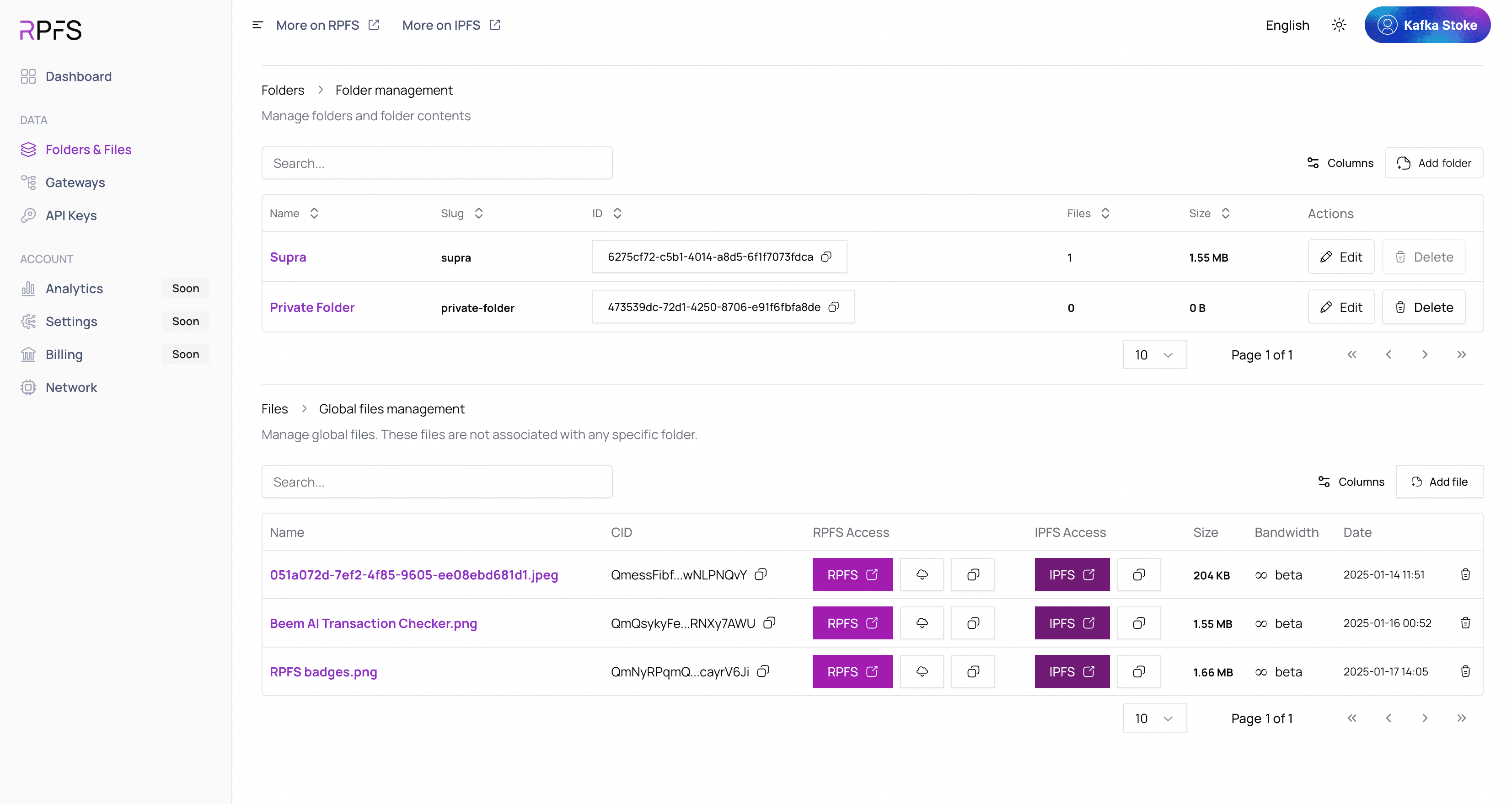
RPFS – DATA STORAGE
RPFS is a decentralized storage application built on the Radix DLT stack, leveraging the IPFS (Interplanetary File System) network. It provides scalable, reliable storage for a variety of ecosystem services and applications, with a particular focus on managing images and metadata associated with digital assets such as NFTs.
contextThe decentralized storage market is crowded, so the challenge was to differentiate RPFS both in features and user communication. A key use case was enabling creators to upload and manage large volumes of NFT-related assets efficiently, with easy access to metadata and links for integration across multiple platforms.
DesignFrom the outset, I collaborated closely with developers and engaged with potential users to identify pain points common to competing platforms. Two primary challenges emerged: rising bandwidth costs and the absence of a fully Web3 authentication system. To address cost concerns, we combined multiple technology stacks to minimize traffic-related expenses, ensuring predictable costs for creators even as their NFTs received increasing access across marketplaces and wallets. For authentication, we leveraged the Radix DLT stack to create unique NFT-based login badges. These badges provide enhanced privacy compared to traditional email logins, align with Web3 principles, and can be transferred or sold to other users. The design process focused on simplifying file management, improving onboarding, and making complex decentralized storage understandable for users. Wireframes, user flows, and iterative prototypes guided the team in crafting a product that balances functionality, transparency, and usability.
ResultsEarly user feedback highlighted RPFS for its ease of use, clear cost structure, and predictability. The landing page emphasizes key features with clarity and visual hierarchy, helping users understand the service before signing up. By addressing both technical and user experience challenges, RPFS established itself as a competitive and user-friendly solution in the decentralized storage space.
3. In approx. 24 hrs you will receive back the TKR tokens. We do it manually for now.Example: for 4 Artworks send >>> 4 x 300 XRD = 1200 XRD. You will get 4 TKR tokens back to use for minting on FOTON when it goes live.
3. In approx. 24 hrs you will receive back the TKR tokens. We do it manually for now.Example: for 4 Artworks send >>> 4 x 300 XRD = 1200 XRD. You will get 4 TKR tokens back to use for minting on FOTON when it goes live.
Loopersanimation, nft, collection, art


















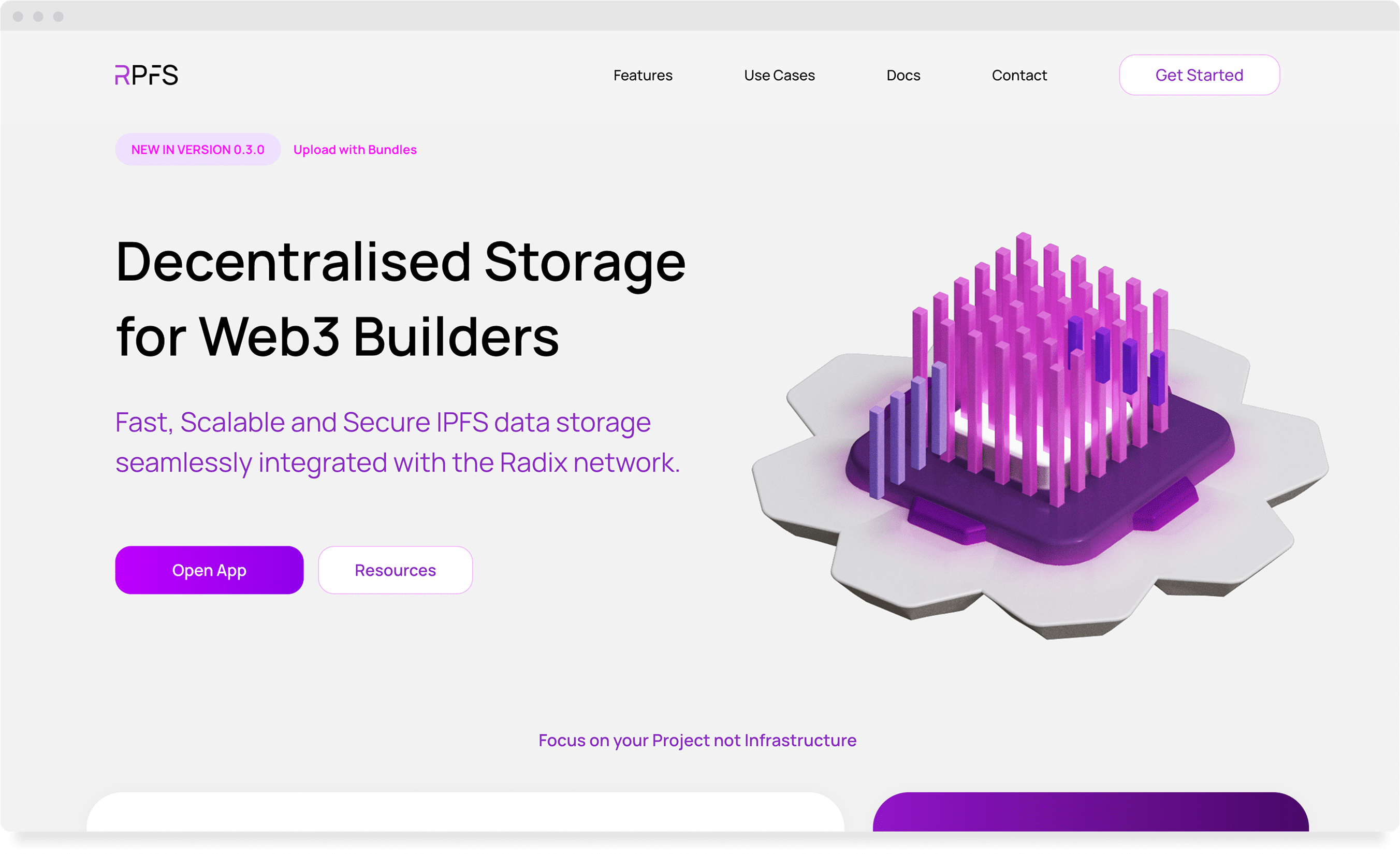
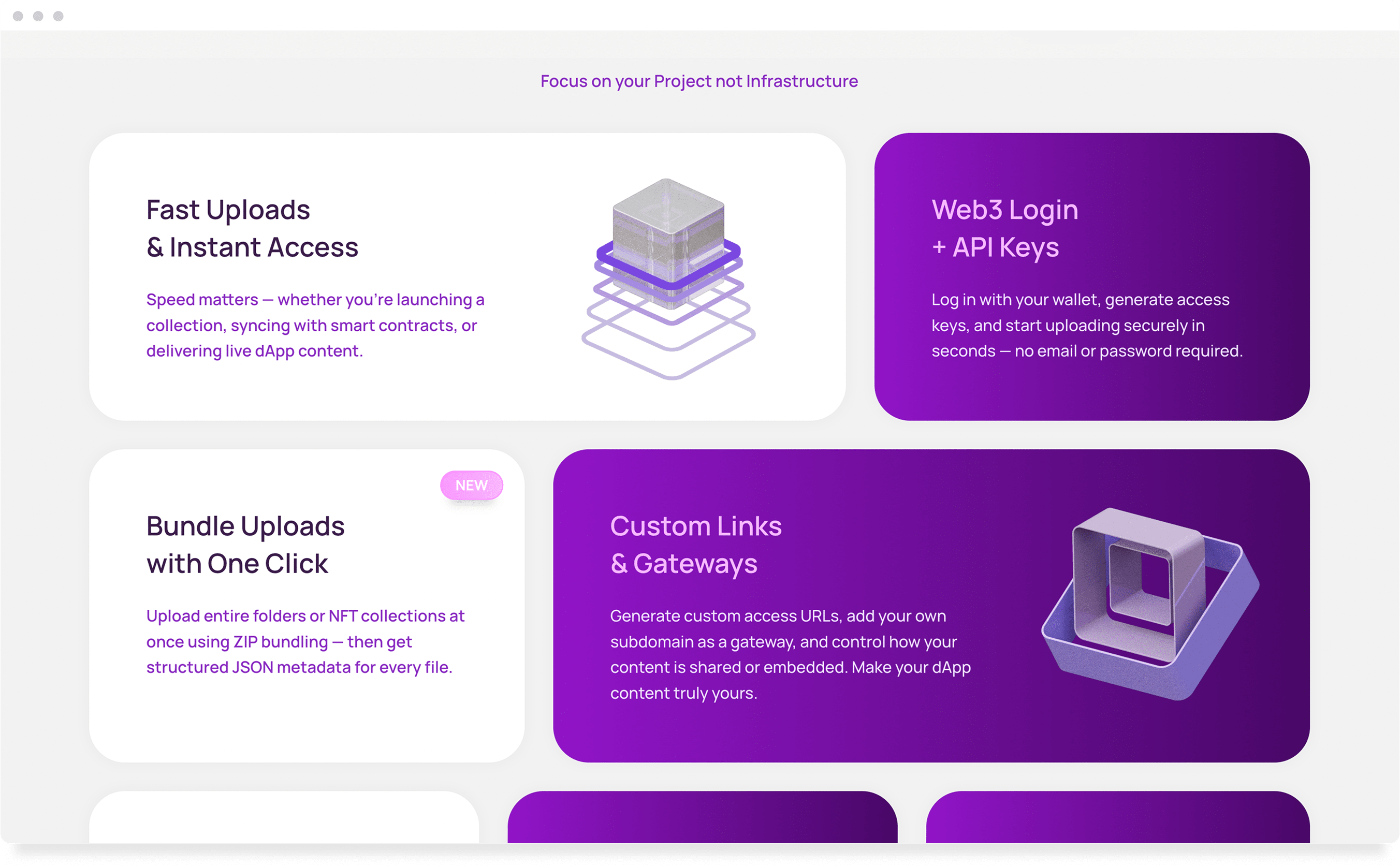
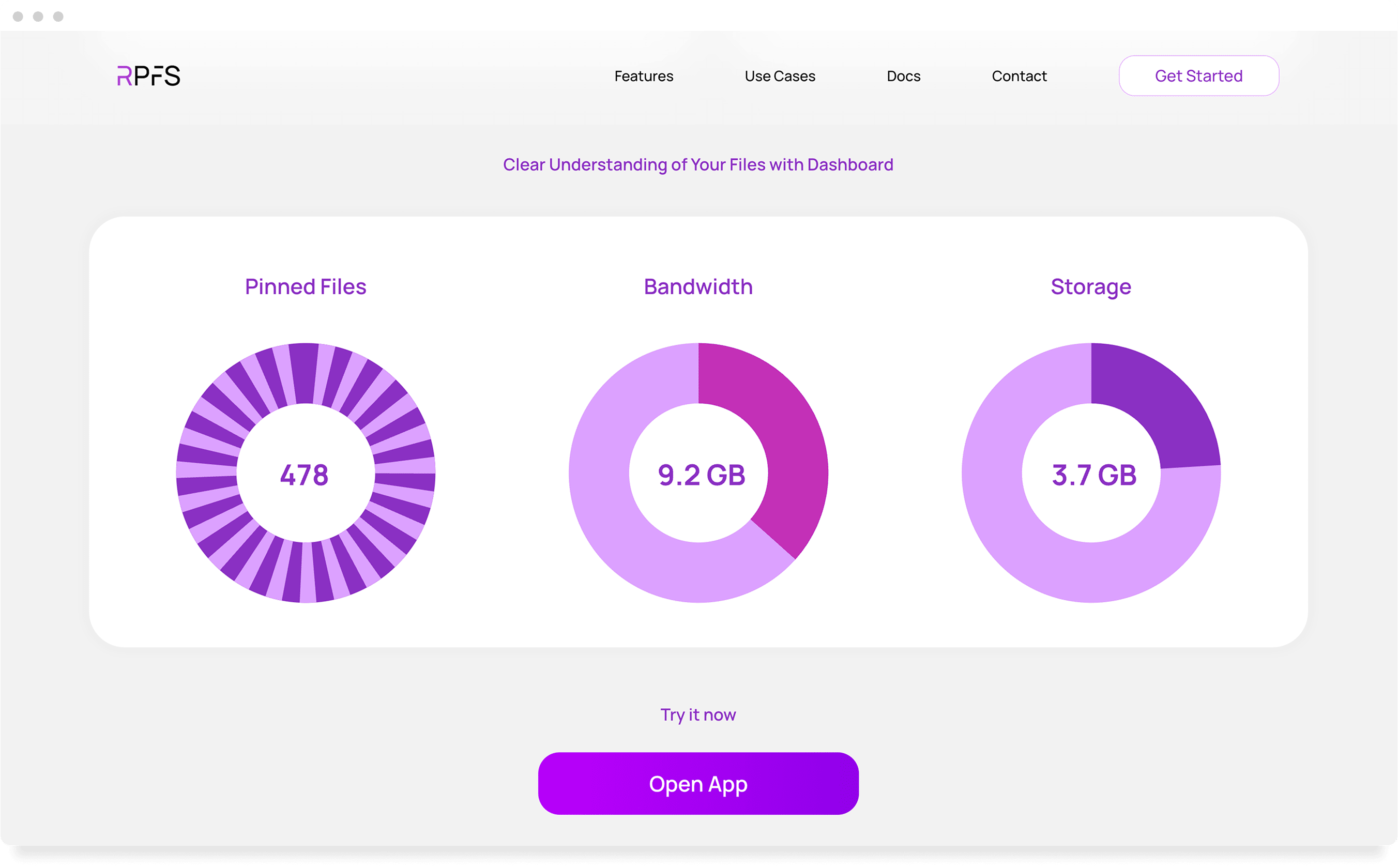
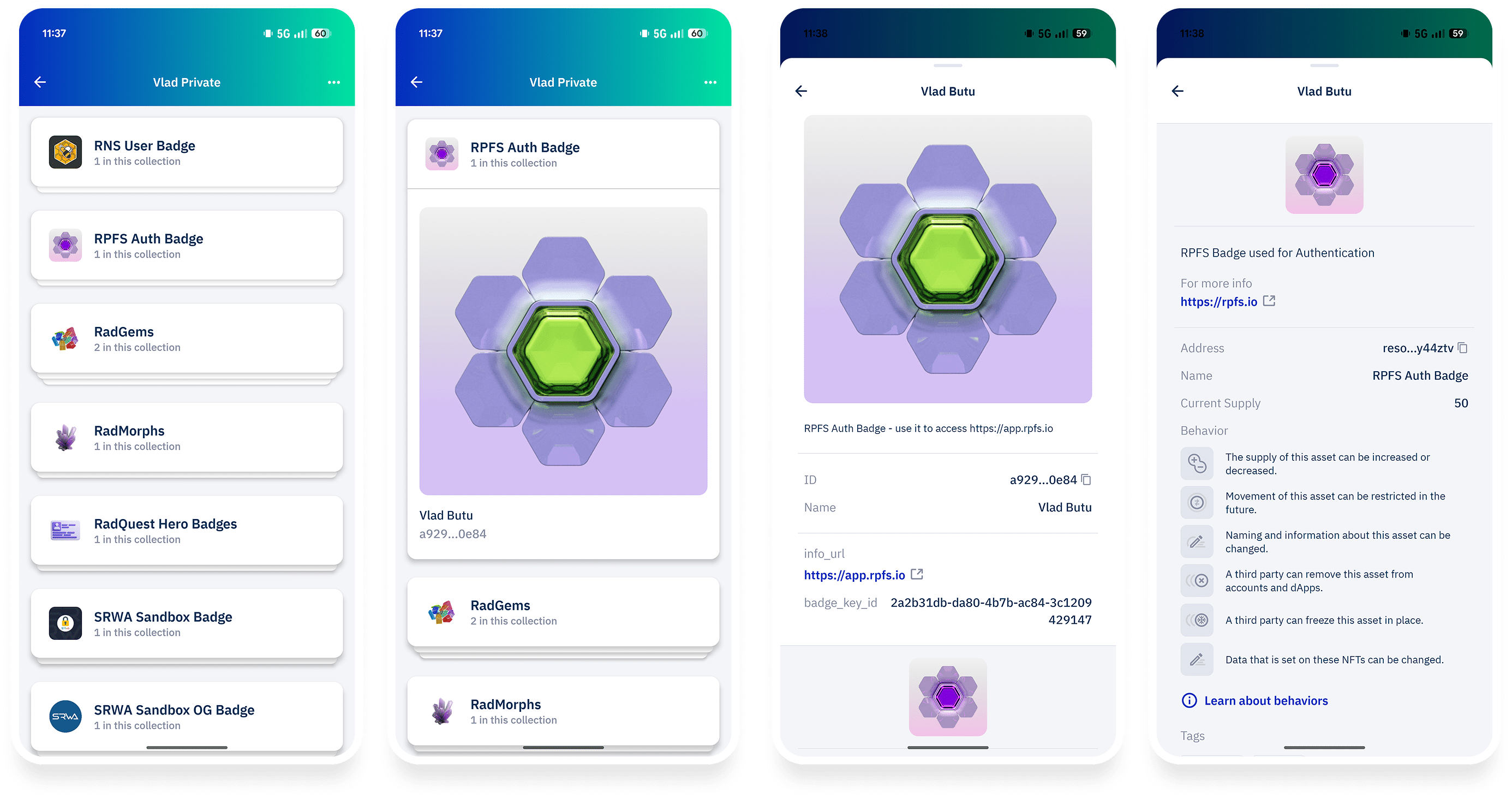
RPFS owner badges displayed in the Radix DLT wallet — a Web3 native authentication system that replaces traditional email logins, offering enhanced privacy, security, and flexibility.
The navigation and main actions are straight forward and familiar to web2 applications despite the web3 features.
